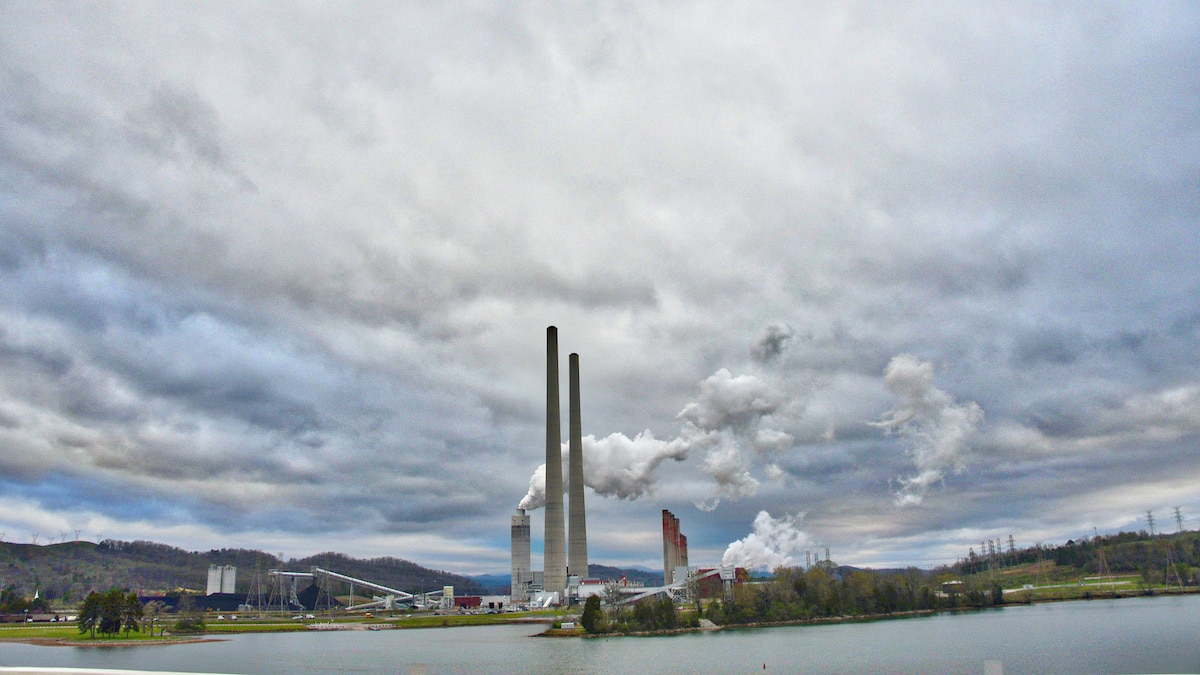

The 1.4-gigawatt coal-fired Kingston Steam Plant, just outside Kingston, Tennessee on the shore of Watts Bar Lake on March 31, 2019. In 2008, a coal ash pond at the plant collapsed, leading to the largest industrial spill in modern U.S. history and subsequent industry regulations in 2015. Paul Harris / Getty Images
The U.S. Environmental Protection Agency (EPA) announced a rule change on Friday that will allow some coal power plants to ignore a court order to clean up coal ash ponds, which leech toxic materials into soil and groundwater. The rule change will allow some coal ash ponds to stay open for years while others that have no barrier to protect surrounding areas are allowed to stay open indefinitely, according to the AP.
The arsenic-laced sludge that fills coal ash ponds is likely to leak when just a plastic barrier protects it. It is far more likely to pollute nearby soil and water when the pits have a clay barrier, according to researchers, as The Hill reported.
A 2018 order from the U.S. Court of Appeals for the D.C. Circuit had forced the EPA to close coal ash ponds that did not have plastic lining and were likely to leak toxic chemicals, making Friday’s rule change seem like a blatant move to undermine the court’s authority, according to environmental groups who promised to sue to stop the rule change, as The Hill reported.
Environmentalists argue that the rule change is a favor to the coal industry, for which EPA Administrator Andrew Wheeler served as a lobbyist prior to joining the Trump administration. The move allows the industry to dump its byproducts inexpensively and irresponsibly.
“The reason the utilities are arguing to keep the ponds is because they have put in these unlined pits out the back door of the power plant that act as a catchall for their toxic waste,” said Lisa Evans, an attorney for the environmental group Earthjustice, as the AP reported. “They don’t want to get rid of them because they are cheap.”
Earthjustice and the Environmental Integrity Project commissioned a study on coal ash ponds and found that 91 percent of them were leaking toxic chemicals beyond what was permitted by EPA regulations, as The Hill reported. Their study found that heavy metals from the waste was polluting nearby drinking wells and groundwater.
Coal ash is produced when coal is burned to produce power. It is full of arsenic, mercury, lead and several other hazardous heavy metals. In the U.S., coal plants create nearly 100 million tons annually of ash and other waste, according to the AP.
“When ponds without lining leak, it’s often more aggressive, faster and harder to control,” said Evans, as The Hill reported. “Utilities are asking for favors and exemptions and EPA is willing to give them and is willing to rush to provide these exemptions.”
The 2018 court decision found that clay lined coal ash ponds, or unlined ponds, are simply dangerous, as the AP reported.
Evans noted that the Obama-era Resource Conservation and Recovery Act required power plants to close unlined coal-ash ponds by April 2019, but the EPA keeps extending the deadline, as the AP reported.
By rewriting the rule, coal plants are able to get around the mandates of the 2015 Resource Conservation and Recovery Act by simply showing that their coal ash ponds pose no threat to human health.
“The Trump EPA is flouting the court’s decision,” said Evans, as the AP reported. “I’ve never seen anything like this before.”
- 10 Ways Andrew Wheeler Has Decimated EPA Protections in Just ...
- What a Real Coal Ash Cleanup Looks Like - EcoWatch

 233k
233k  41k
41k  Subscribe
Subscribe 